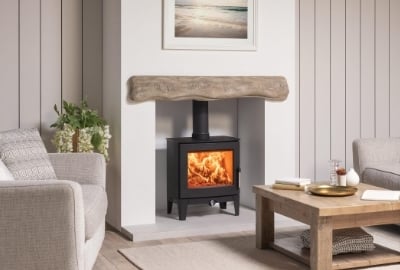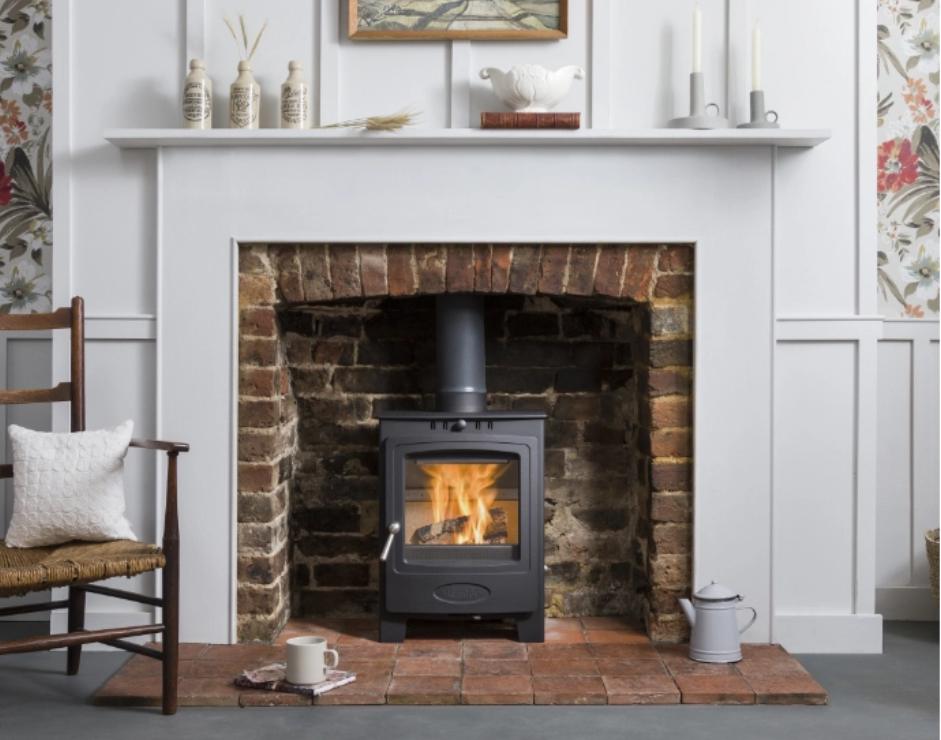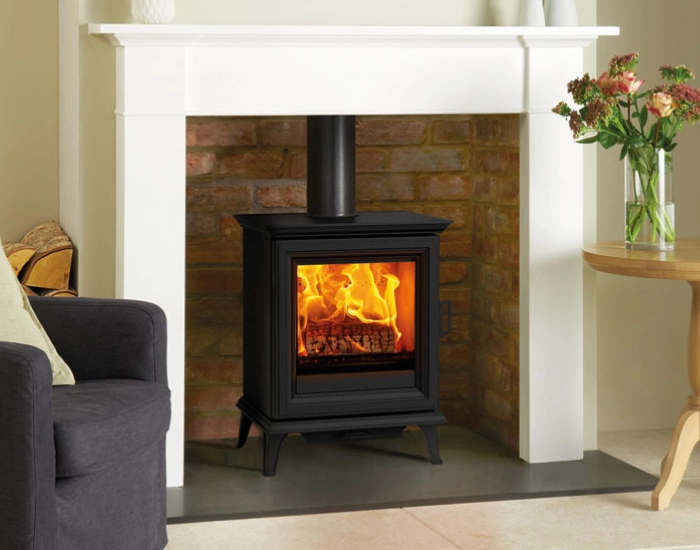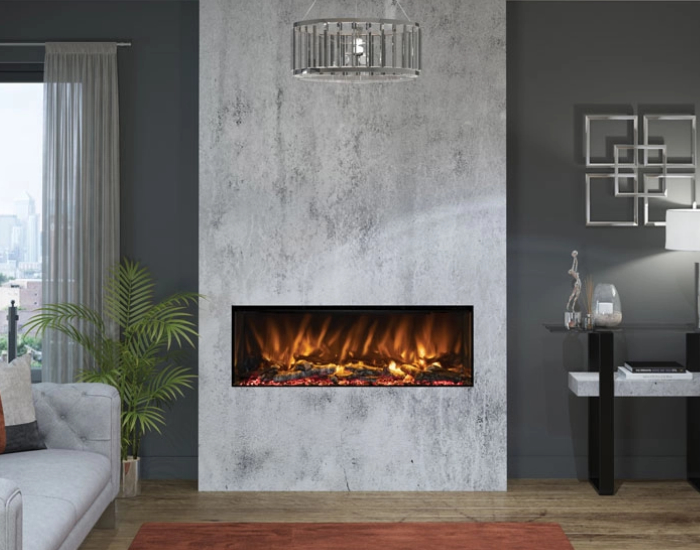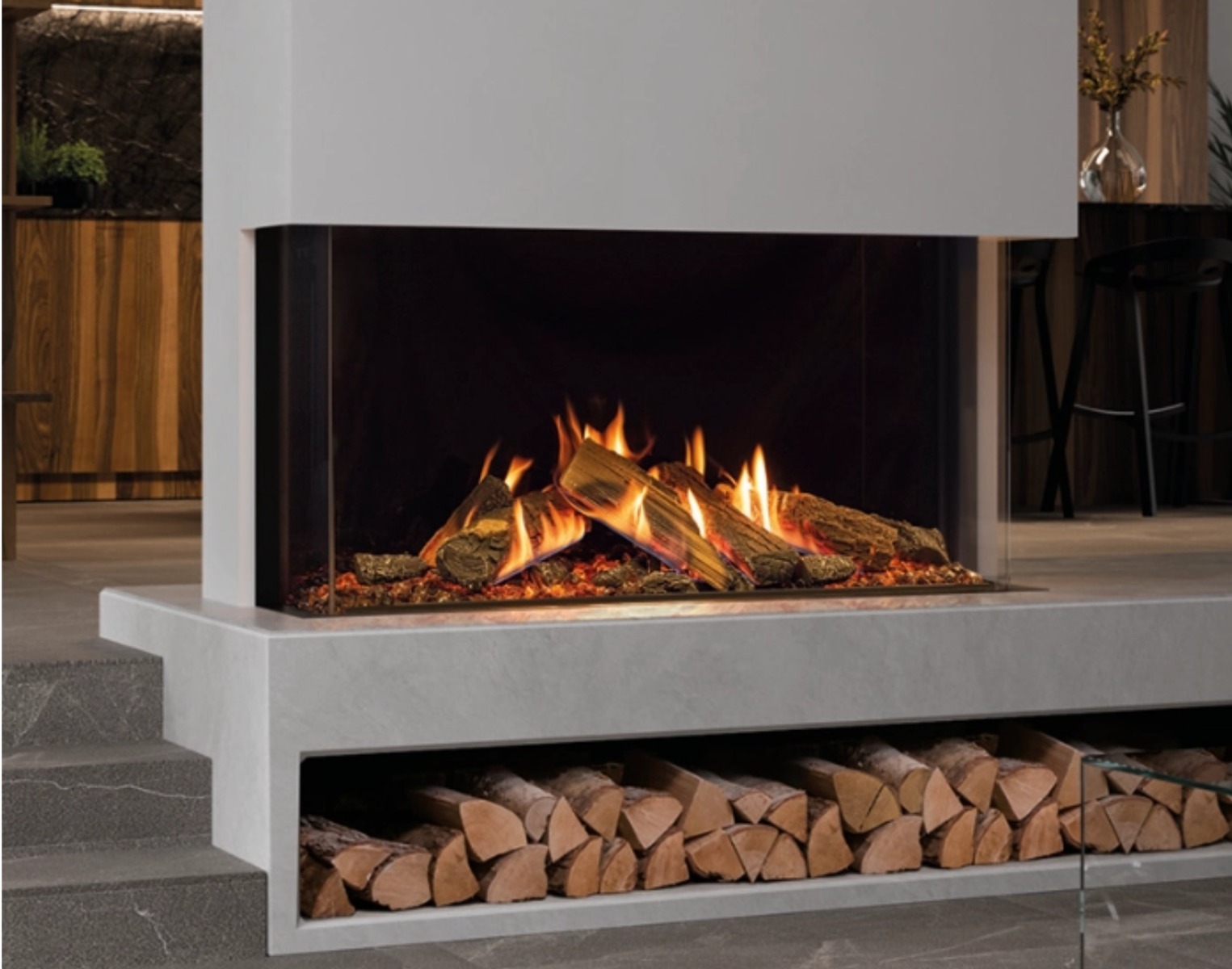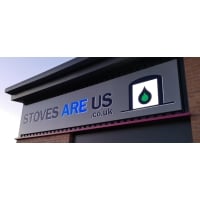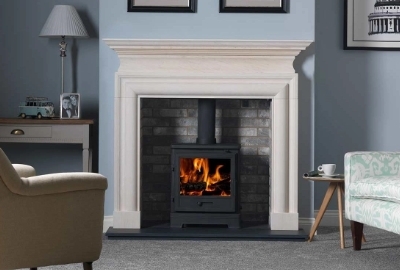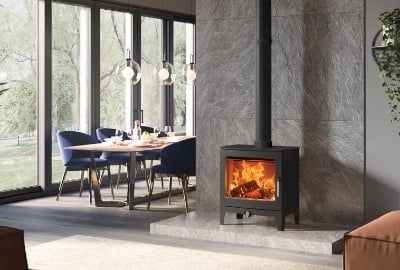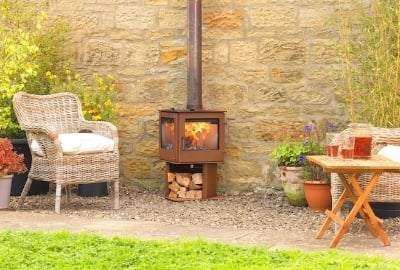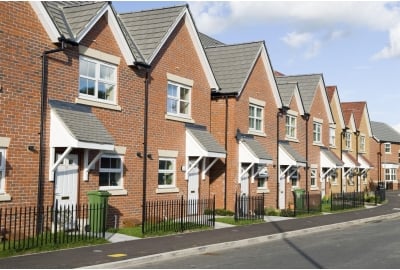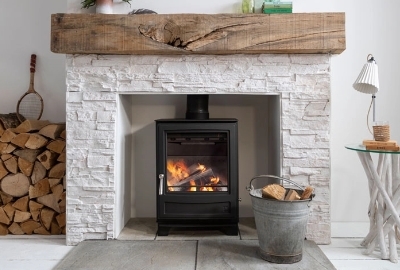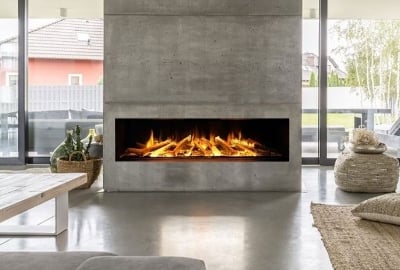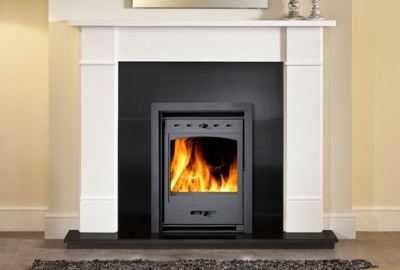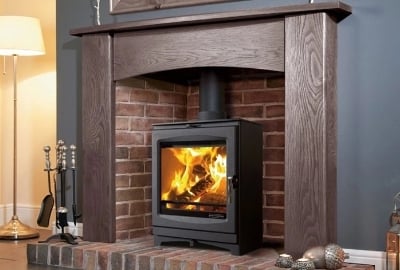If you're considering heating your home with a wood burner or a gas fireplace, you may be wondering which option is more cost-effective. In this article, we'll compare the costs of using a wood burner versus gas heating & electric fireplaces to help you make the best and most informed decision that you can. We’ll also cover the benefits of using each different fuel type to see which will be most appropriate and best suited to your home.
Contents
What are the Initial Costs of a Wood Burner?
Gas, Electric & Solid Fuel Running Costs
Which Fireplace is Most Reliable?
What are the Maintenance Costs?
What are the Benefits of Gas & Electric & Solid Fuel Fires?
What are the Initial Costs of a Wood Burner?
When it comes to the initial costs like installation, wood burners and gas fires are much of a muchness unless, of course, you decide to self-fit your log burner which can save you a lot of the initial cost. If you’re interested in learning more about the installation of a log burner and the costs involved visit our dedicated blog about How much does it cost to install a Wood Burner.
Electric fireplaces are often far more affordable to install although creating a faux chimney breast for a media wall fireplace can be costly as you’ll need to employ the services of a joiner and plaster to construct the wall where the fire will be positioned.
The initial cost of each heating appliance can range wildly in price, wood burners can start from around £600 but top-end models can cost a few thousand pounds, especially if you’re going for a large output stove with excellent build quality. Gas fires & fireplaces tend to have a higher purchase value, there are more working parts within the gas burner and you’ll often find remote controls and balanced flues come with extra costs. Electric stoves and fires have prices that also vary in price, if you’re wanting an electric fire with a realistic flame effect we’d recommend you don’t go for the cheapest options. Good quality electric fires for a media wall will usually start in the region of £700 as with lots of heating products be prepared to pay more for the best and most realistic electric fireplaces.
Gas, Electric & Solid Fuel Running Costs
It is really important that you consider the long-term costs and the benefits you’ll receive from your heating appliance before you make a decision.In light of energy prices rising to unprecedented rates, more people than ever before are looking at alternative ways to heat their homes and stay warm. The cost of gas and electricity is more expensive than ever before due to factors such as a rise in import costs, an increase in global demand and supply issues caused by global conflicts. This has led to many consumers looking for alternative sources of heat, especially as the cost of living crisis pushes households to their limits financially. Wood-burning stoves have experienced a noticeable increase in demand, but is it more cost-effective to use a wood-burning stove rather than central heating? Once the initial installation costs are met, the cost of running a log burner is cheaper than the cost of running a gas and electric fire. According to the Energy Saving Trust, a log burner can reduce a home's heating bill by up to 10%. The Stove Industry Alliance have compared the running costs of an average household and the costs of fuelling a wood burner are a third of the cost of electricity and 13% less than gas central heating. The savings you could make on fuel costs could become even more if energy prices continue to increase.

Which Fireplace is Most Reliable?
When it comes to reliability, for us there is one clear winner, the wood-burning stove. Cast iron and steel wood stoves are built to last, their solid build means they can be used every day and could last for decades when properly maintained. When you compare a wood burner to a gas central heating system or an electric fire you’d be lucky to get between 5-10 years of use from these products.The most likely parts to fail on a log burner are the fire bricks, solid fuel grate or the stove glass. Each of these parts can be easily replaced and often for a fraction of the price that it would cost for a gas or electric replacement part. What’s more, you are able to fit these replacement parts yourself without any specialist skills in no time at all.
What are the Maintenance Costs?
When considering the costs of owning a wood burner or a gas fireplace, it's important to factor in the maintenance expenses. Wood burners require regular cleaning and maintenance to ensure they operate efficiently and safely. This includes cleaning out the ash, inspecting and replacing any worn-out parts, and ensuring the flue or chimney is swept at least annually. These maintenance tasks can add up over time and may require additional expenses for professionals like a chimney sweep. On the other hand, gas fireplaces should require less maintenance. They do not produce ash or require regular cleaning like wood burners. However, it's still important to have them inspected and serviced annually to ensure they are functioning properly and safely. Your Gas Safe installer will check the gas appliance, clean the burner and inspect the ignition system.
Overall, while wood burners may have lower fuel costs, they do require more regular cleaning and maintenance, which can add to the overall cost of ownership. Gas fireplaces, on the other hand, have higher fuel costs but require less maintenance. It's essential to consider these factors and weigh them against your personal preferences and budget when deciding between a wood burner and a gas fireplace.
Electric fireplaces are by far the easiest room heater to maintain, they don’t produce ash, or smoke or have a flue to maintain. If you’re looking for a room heater which requires the minimum amount of maintenance then an electric fireplace might be a good choice for you.
What are the Benefits of Gas & Electric & Solid Fuel Fires?
It isn’t easy to decide between the fuel types and there is a lot to weigh up when it comes to the pros and cons of log burners, central heating systems and electric fireplaces. However, if you are looking for entry savings and to reduce the costs of your heating bill then a wood-burning stove could be the way to go. Keep reading if you’re interested in the top benefits of wood-burning stoves, gas fires & electric fires we’ve listed the top reasons you should buy each fire type in the next section.
Benefits of Wood-Burning Stoves, Gas & Electric Fires
Benefits of a Wood-Burning Stove
High Efficiency - Wood burners are far more efficient than open fires and more efficient than open-fronted gas fires as lots of the heat from these fires is lost up the chimney rather than going into the room. Ecodesign wood-burning stoves are at least 70% and some of the most efficient models can reach a 90% rating. This means that the most efficient wood burners lose just over 10% of heat up the flue or chimney. Lots of glass-fronted gas fires are 90% efficient and electric fires are all 100% efficient so all the heat produced is pushed into your room.
Aesthetic & Cosy - One of the main reasons consumers opt for a wood burner is the cosy ambience they create in a room. Nothing beats the smouldering logs and flickering flames of a log burner on a cold winter's night.
High Heat Output - Log burners can produce far more kW heat output than gas and electric fires and larger wood stoves can easily heat open-plan rooms or properties with vaulted ceilings. Some log burners can produce more than 8kW of heat, electric fires have a maximum heat output of 2kW and gas fires often don’t surpass 3-4kW of heat.
Different Types Of Fuel - As well as burning seasoned or kiln-dried logs some stoves are multi-fuel burners and burn authorised solid fuels on these heaters. Pellet stoves are another good option, these heaters burn compact wood chips and are super efficient. If you do decide to buy a wood burner, ensure that you only burn approved fuels, particularly wood with a moisture content of less than 20% that carries the Wood Sure logo.
Benefits of an Electric Fire
Low Maintenance - We’ve mentioned it before but one of the biggest benefit of an electric fire is that they don’t produce smoke or ash and don’t require any specialist servicing like a log burner or gas fire would!
Cost Of An Electric Fire - Electric fireplaces and electric stoves can start at less than £200 (for entry-level models) whereas you might pay upwards of £600 for a gas stove or wood-burning stove.
Best For Efficiency - Nothing beats an electric fire in terms of energy efficiency, electric fires can’t be beaten with 100% efficiency ratings. All of the heat produced by an electric fire is sent into your room with no heat wasted! However, the price you pay per Kilowatt (kW) of heat for electricity will be more than what you are paying per kW for gas or wood so they are by no means the cheapest option. You don't necessarily need the heating on lots of electric models nowadays they allow for a flame effect only setting with the heat on.
Convenient Controls - Lots of electric fires can be operated by a remote control handset, App control or you can manually adjust the settings. A remote control handset can be especially useful if you have limited mobility.
Versatile - The great thing about electric stoves is that they are basically plug-and-play. You can place an electric fire in your living room or move it into your conservatory if you’re using this space.
Benefits of a Gas Fire
Low Running Costs - A gas fire is a great choice to heat your home or living room and can be much cheaper than using an electric fire. They offer fewer maintenance complications when compared to a wood burner and don’t demand the large storage space for fuel as a log store would.
Produce Plenty Of Heat - Lots of gas fires offer a fantastic heat output, you’ll find lots of availability of 3-4kW gas fires and stoves but some can reach upwards of 6kW which can easily heat large-size rooms.
Aesthetic & Cosy - Modern gas fires have incredibly realistic fuel beds and combined with a living flame they can look exactly like a log burner! If you compare the flame to an electric fire they are far more authentic.
No Chimney Required - Did you know that balanced flue and flueless gas fires don’t require a masonry chimney? This can be an incredibly convenient option, especially for those who live in a new-build house.
High Efficiency - Glass-fronted gas fireplaces boast efficiencies of up to 90%. This is quite a bit more efficient than your average log burner.
For those in the market for a gas, electric or solid fuel fire we really hope you’ve found our fireplace cost comparison article insightful and valuable. If you have any further questions on cost, installation or general usage of a stove feel free to get in touch. Our experienced team are on hand to answer any questions you may have on wood burners, gas fires & electric fireplaces.

